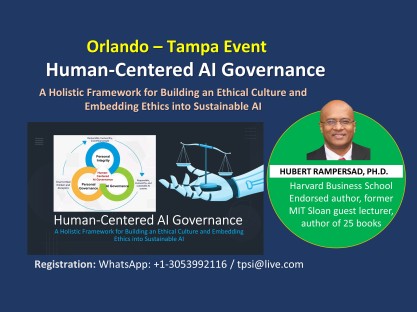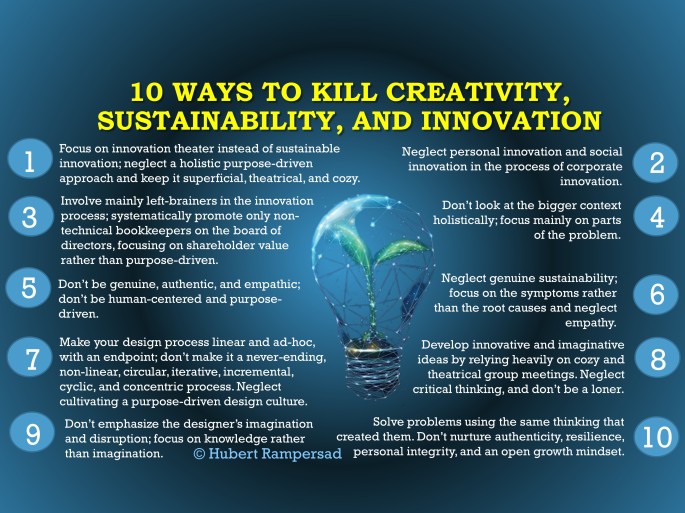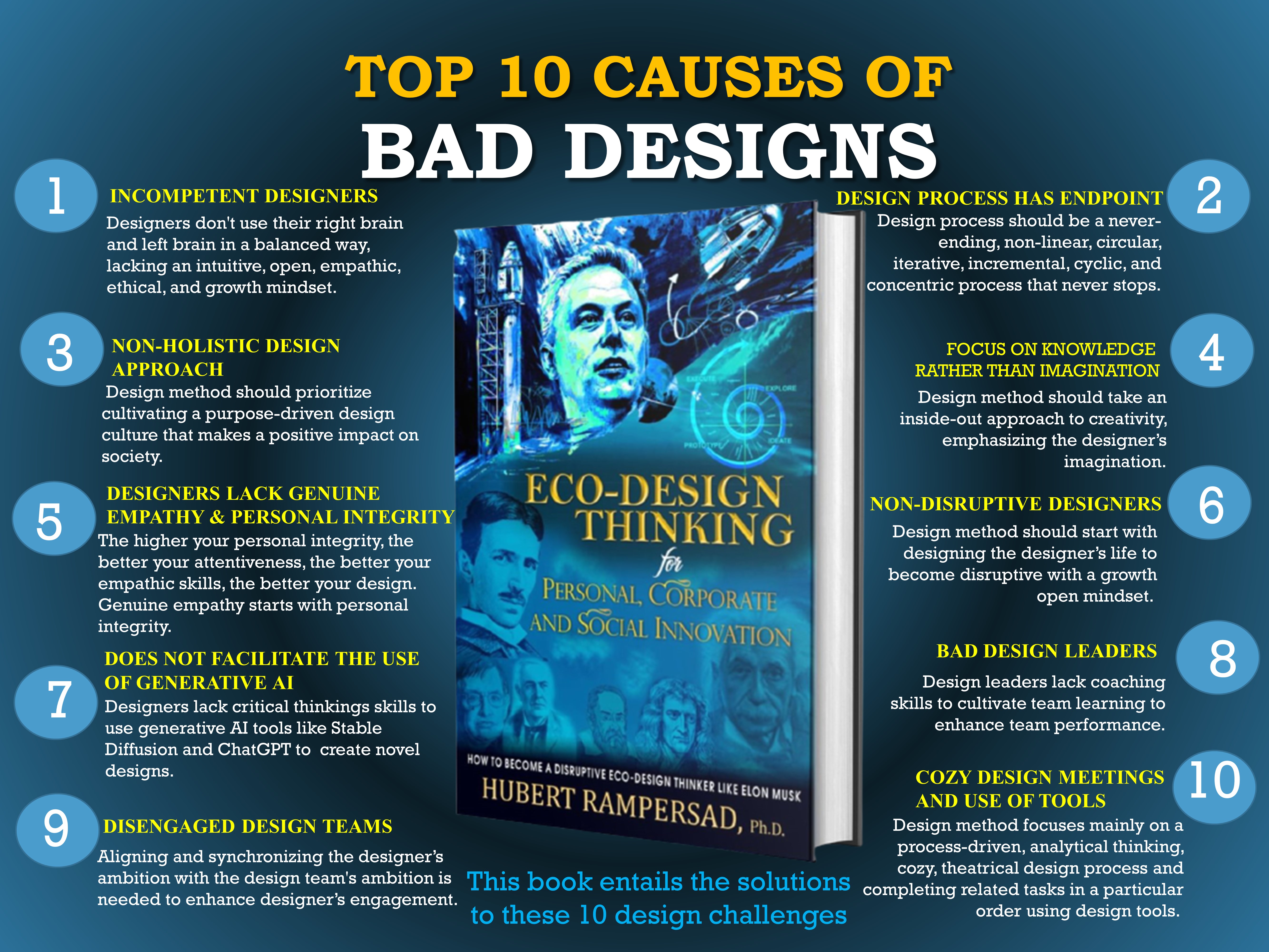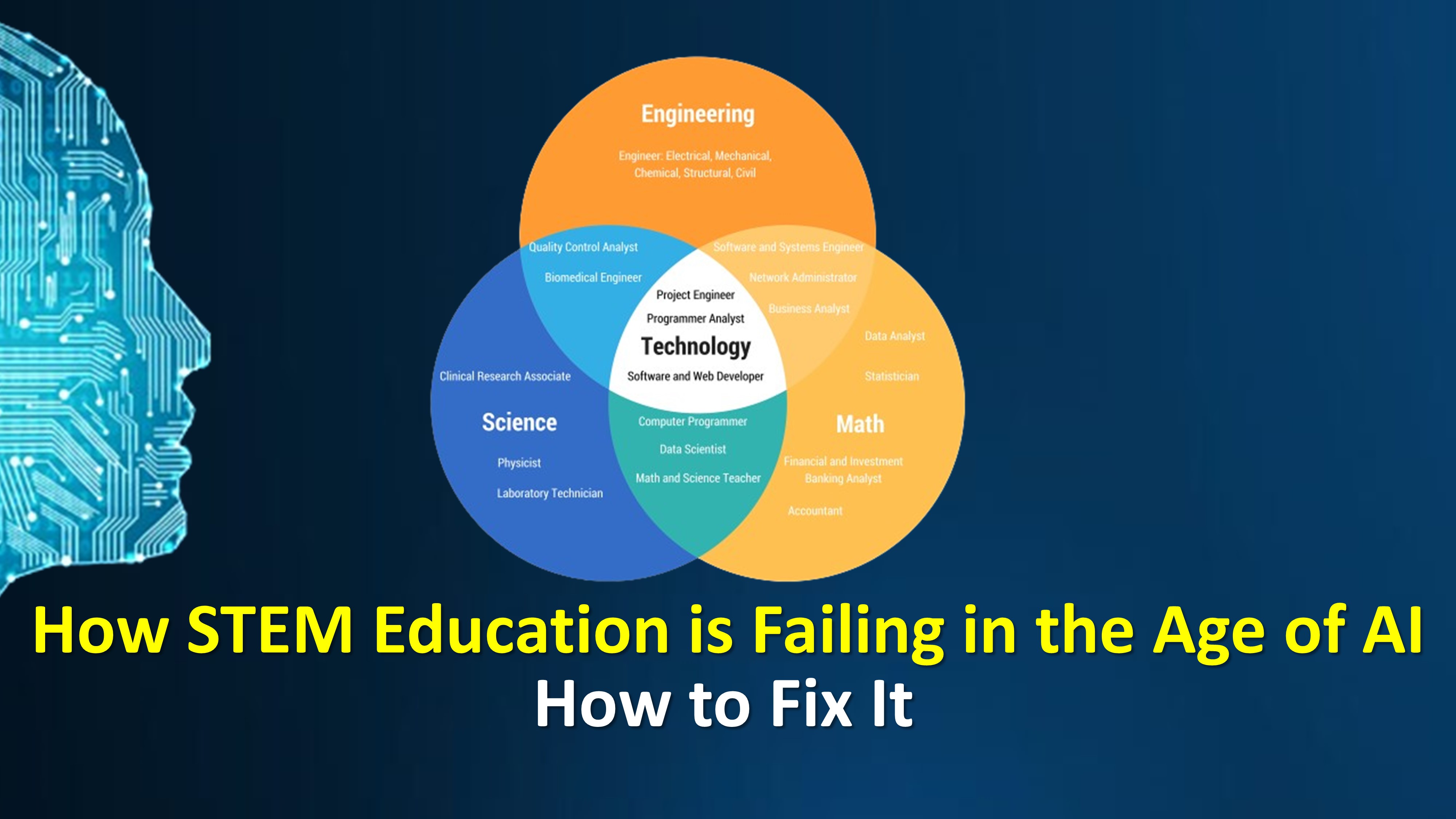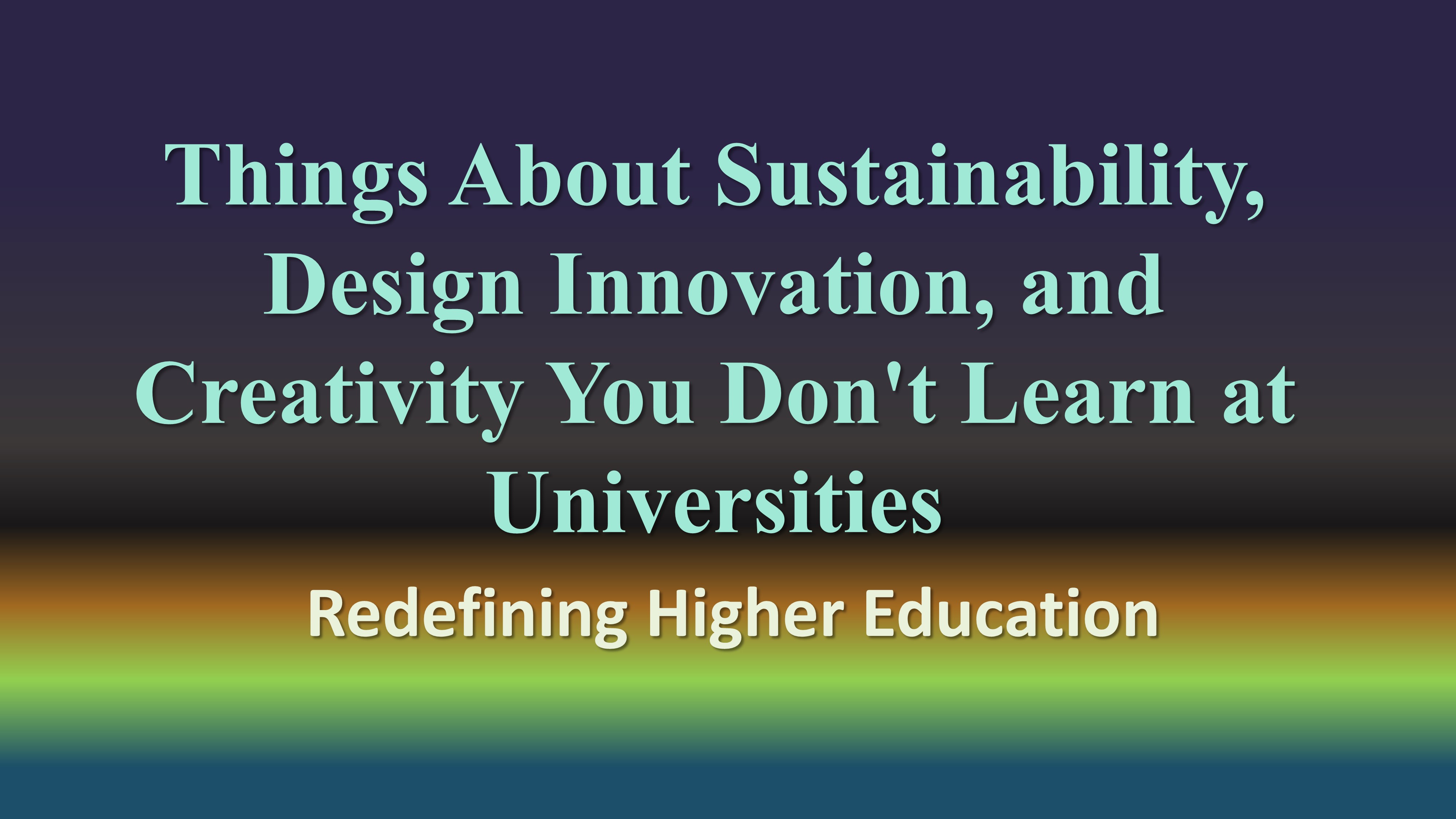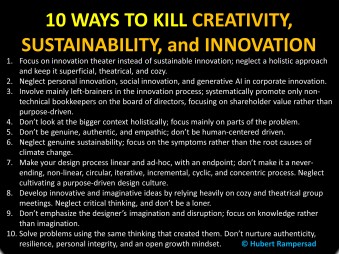Through their remarkable achievements, some influential visionary tech leaders have identified and realized their big dreams. This article delves into their journey, aiming to inspire and guide you on your path to success. This roadmap is based on my book “Eco-Design Thinking for Personal, Corporate, and Social Innovation.” involves five steps: 1. Personal Ambition, 2. Personal Brand, 3. Personal Innovation Strategy, 4. Implementation, and 5. Personal Integrity & Empathy. All these five steps are needed to become an effective visionary leader. The model is illustrated below:
book “Eco-Design Thinking for Personal, Corporate, and Social Innovation.” involves five steps: 1. Personal Ambition, 2. Personal Brand, 3. Personal Innovation Strategy, 4. Implementation, and 5. Personal Integrity & Empathy. All these five steps are needed to become an effective visionary leader. The model is illustrated below:

This holistic blueprint starts with determining who you are at your core authentic self, including your life philosophy, dreams, vision, mission, values, identity, self-knowledge, and self-awareness. It will also help you unlock your creative potential by cultivating solid growth and an empathic and critical thinking mindset. This system will unlock your imagination while honing your authenticity, integrity, empathy, and critical thinking skills. It will also let you define your higher calling and discover your life’s purpose. Let’s examine the five stages of the model more closely:
1. Personal Ambition: To become a visionary leader, you must engage in a reflective process that includes deep thinking, introspection, and self-reflection. During this phase, you’ll be introduced to breathing and silence exercises that will aid in developing self-awareness. Self-knowledge is the ultimate goal of this phase. The outcome of this phase will be the creation of your personal ambition, as illustrated in the diagram below. Please click on this link to view my personal ambition statement. 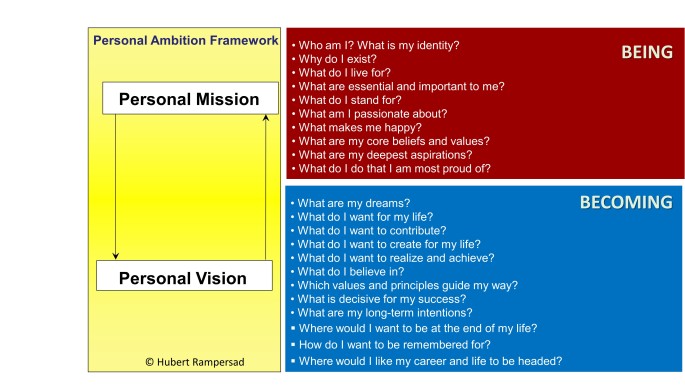 You will identify your personal ambition statement by answering these questions honestly. Your personal ambition entails your identity (mission) and dream (vision). Your dream is related to a higher calling. All the influential tech leaders mentioned below have/had a higher calling. Everyone has a higher calling, a so-called inner assignment. One must know this higher calling and have the courage to follow it to succeed. By practicing breathing and silence exercises, you can better connect with your inner self and find answers to the questions. This will help you to discover your higher purpose. Having a higher purpose is crucial to becoming a visionary. All the influential tech leaders mentioned below had/have a higher purpose and were/are visionary. Through this process, you’ll cultivate self-knowledge, self-awareness, self-management, and self-learning, which entails a journey toward personal disruptive innovation, as shown in this diagram:
You will identify your personal ambition statement by answering these questions honestly. Your personal ambition entails your identity (mission) and dream (vision). Your dream is related to a higher calling. All the influential tech leaders mentioned below have/had a higher calling. Everyone has a higher calling, a so-called inner assignment. One must know this higher calling and have the courage to follow it to succeed. By practicing breathing and silence exercises, you can better connect with your inner self and find answers to the questions. This will help you to discover your higher purpose. Having a higher purpose is crucial to becoming a visionary. All the influential tech leaders mentioned below had/have a higher purpose and were/are visionary. Through this process, you’ll cultivate self-knowledge, self-awareness, self-management, and self-learning, which entails a journey toward personal disruptive innovation, as shown in this diagram:

The best ideas come when you are alone. Self-learning – the ability to gather, process, retain, and evaluate knowledge alone — is the foundation of creativity and imagination. Traditional creativity approaches lack imagination because they neglect self-learning and, because of this, fail to address complex problems, read “Why Creativity Sucks“. This process will help you learn more about yourself and discover the truth about your life’s purpose. By formulating personal ambition, you can initiate self-examination and prepare your mindset for critical thinking. As you become more conscious of yourself, you gain more creativity. The thinking process and mindset changes are meant to prepare you for action as a proactive, empathic disruptor.
Vision/dream
Your vision is a description of how you would like to realize your dream in the long term. Once you discover the core of your nature, your higher self, and who you really are, you will find it possible to make every dream come true. In Walt Disney’s words, “All our dreams can come true if we dare to pursue them.” Henry David Thoreau said, “If a man advances confidently in the direction of his dreams to live the life he has imagined, he will meet with a success unexpected in common hours……Go confidently in the direction of your dreams. Live the life you have imagined.” Ralph Waldo Emerson believed, “Your dream is the germ from which all growth of nobleness proceeds.” By discovering and formulating your higher self, you will become visionary, innovative, disruptive, and empathic, unleash your creative potential, and realize you have something unique. Your job is to know what that is and to work at it with passion and love.
Once you better understand who you are, your ability and unique talents, what you stand for, and your long-term intentions, it will be much easier to channel your energy in the right direction to achieve a dream worthy of your effort. To become a visionary, it is your responsibility to identify your dream and to respond to it with love and passion. Read “Personal Disruptive Innovation“. Remember what George Bernard Shaw said, “The people who get on in this world are the people who get up and look for the circumstances they want, and, if they can’t find them, make them.” Here are some visionary tech leaders who identified and realized their dream successfully:
responsibility to identify your dream and to respond to it with love and passion. Read “Personal Disruptive Innovation“. Remember what George Bernard Shaw said, “The people who get on in this world are the people who get up and look for the circumstances they want, and, if they can’t find them, make them.” Here are some visionary tech leaders who identified and realized their dream successfully:
 Nikola Tesla dreamt about a world wireless system. His great dream was to find the means to broadcast electrical power without wires in between. He gave his life to realize his vision, while others made millions with his inventions. In the end, he wound up a penniless and forgotten man.
Nikola Tesla dreamt about a world wireless system. His great dream was to find the means to broadcast electrical power without wires in between. He gave his life to realize his vision, while others made millions with his inventions. In the end, he wound up a penniless and forgotten man.
Henry Ford’s dream was, “I will build a motor car for the great multitude…constructed of the best materials, by the best men to be hired, after the most straightforward designs that  modern engineering can devise …so low in price that no man making a good salary will be unable to own one—and enjoy with his family the blessing of hours of pleasure in God’s great open spaces.” He was the first to introduce the assembly line in 1914 and mass-produce cars, making them affordable for the general public.
modern engineering can devise …so low in price that no man making a good salary will be unable to own one—and enjoy with his family the blessing of hours of pleasure in God’s great open spaces.” He was the first to introduce the assembly line in 1914 and mass-produce cars, making them affordable for the general public.
Konosuke Matsushita’s dream was- To balance Western rationalism with the spiritualism of  The East. The founder of Panasonic had no money and no real business experience, but he did have drive, imagination, creativity, and ambition. His philosophy was to provide ample consumer goods at the lowest possible prices—without compromising quality and service. He admitted that his futuristic personal vision was the reason for his success— “I have tried to envisage intuitively, rather than analytically, the changes that will occur in our society, and I have tried to create what life will be like in the next century.”
The East. The founder of Panasonic had no money and no real business experience, but he did have drive, imagination, creativity, and ambition. His philosophy was to provide ample consumer goods at the lowest possible prices—without compromising quality and service. He admitted that his futuristic personal vision was the reason for his success— “I have tried to envisage intuitively, rather than analytically, the changes that will occur in our society, and I have tried to create what life will be like in the next century.”
Akio Morita’s dream was- To change the world’s image of the term “Made in Japan” from  one of the shoddy imitations of one of high technology and reliability in miniature packages. His passion was to create something new, so he helped steer Japanese industries toward creating new technologies and introduced various innovative products to the world. The co-founder of the Sony Corporation developed innovative products for people who didn’t even know they wanted the Walkman, Trinitron television, video watchman, compact disc (CD), and much more. With ingenuity in electronics design and cutting-edge business practices, it did not take long to see how or why all his visions became reality.
one of the shoddy imitations of one of high technology and reliability in miniature packages. His passion was to create something new, so he helped steer Japanese industries toward creating new technologies and introduced various innovative products to the world. The co-founder of the Sony Corporation developed innovative products for people who didn’t even know they wanted the Walkman, Trinitron television, video watchman, compact disc (CD), and much more. With ingenuity in electronics design and cutting-edge business practices, it did not take long to see how or why all his visions became reality.
 Steve Jobs’s dream was to change the world. His forward-thinking, innovative approach and out-of-the-box strategies set up Apple for sustained growth and unique product offerings. His vision of putting a computer in the hands of everyday people was big and bold.
Steve Jobs’s dream was to change the world. His forward-thinking, innovative approach and out-of-the-box strategies set up Apple for sustained growth and unique product offerings. His vision of putting a computer in the hands of everyday people was big and bold.
Tim Berners-Lee invented the World Wide Web. His vision was to create a comprehensive  collection of information in words, sounds, and images, each discretely identified by UDIs and interconnected by hypertext links. Use the Internet to provide universal access to that information collection.
collection of information in words, sounds, and images, each discretely identified by UDIs and interconnected by hypertext links. Use the Internet to provide universal access to that information collection.
Hasso Plattner’s dream was- To change the way companies do business by helping them. run simple. He is the co-founder of SAP and Chairman of the SAP Supervisory Board. He reflected continuously on this vision and spirit he believed in and created. He dared to  dream it and was determined to make it a reality. He said, “When we began in 1972, our vision was to build real-time business applications, and we did so in close cooperation with our first customers. Today, SAP continues to be the trusted innovator it was then. We are driving intellectual renewal with breakthrough innovations, and we have also returned to our roots, working closely with customers to make the impossible possible.” In 2005, he donated US$35 million to fund the d.school, officially named “Hasso Plattner Institute of Design” at Stanford.
dream it and was determined to make it a reality. He said, “When we began in 1972, our vision was to build real-time business applications, and we did so in close cooperation with our first customers. Today, SAP continues to be the trusted innovator it was then. We are driving intellectual renewal with breakthrough innovations, and we have also returned to our roots, working closely with customers to make the impossible possible.” In 2005, he donated US$35 million to fund the d.school, officially named “Hasso Plattner Institute of Design” at Stanford.
Elon Musk’s vision is to contribute to the world’s shift from fossil fuels to sustainable.  energy sources. According to Musk, the thing that drives him is vision. He said, “I think having an inspiring and appealing future is important. There must be reasons you get up in the morning and want to live. Why do you want to live? What’s the point? What inspires you? What do you love about the future?” He also said: “Don’t attach yourself to a person, a place, a company, an organization, or a project. Attach yourself to a mission, a calling, a purpose only. That’s how you keep power and your peace. It worked pretty well for me this far”.
energy sources. According to Musk, the thing that drives him is vision. He said, “I think having an inspiring and appealing future is important. There must be reasons you get up in the morning and want to live. Why do you want to live? What’s the point? What inspires you? What do you love about the future?” He also said: “Don’t attach yourself to a person, a place, a company, an organization, or a project. Attach yourself to a mission, a calling, a purpose only. That’s how you keep power and your peace. It worked pretty well for me this far”.
Jeff Bezos’s new dream is “A world with a trillion people living in space.” The Amazon and  Blue Origin owner says, ‘A trillion people will live in space, there will be “a thousand Einsteins and a thousand Mozarts” and we’ll develop other planets, leaving Earth a beautiful place.” He disrupted the retail industry by making online shopping fast and convenient and is now taking on traditional retailers with its own brands. His Amazon is the most dominant player in an industry that controls a fundamental part of the world’s digital infrastructure.
Blue Origin owner says, ‘A trillion people will live in space, there will be “a thousand Einsteins and a thousand Mozarts” and we’ll develop other planets, leaving Earth a beautiful place.” He disrupted the retail industry by making online shopping fast and convenient and is now taking on traditional retailers with its own brands. His Amazon is the most dominant player in an industry that controls a fundamental part of the world’s digital infrastructure.
Richard Branson realized his lifelong dream with Virgin Galactic spaceflight on July 11,  2021. He is the first of the billionaire space company founders to ride his own spacecraft and fly to space aboard his own ship, an achievement that brings space tourism closer to reality. This is a poem adventurer Branson wrote: “The road to success is paved with tests. So, you’ve got to believe in yourself above the rest. Dream big, and let your passion shine; if you don’t, you won’t end up with a dime. Challenge the status quo, disrupt the market, and say YES! And remember that innovation is an endless quest. Don’t forget to change business for good. If you want to change the world, then you should. If you think with your head and listen to your heart. I promise you’ll get off to a flying start. Make bold moves, but always play fair. Always say please and thank you – it’s cool to care. Do what you love and love what you do. This advice is nothing new. Now, stop worrying about whether your business will be a hit. Rise to the challenge and say ‘screw it, let’s do it!”
2021. He is the first of the billionaire space company founders to ride his own spacecraft and fly to space aboard his own ship, an achievement that brings space tourism closer to reality. This is a poem adventurer Branson wrote: “The road to success is paved with tests. So, you’ve got to believe in yourself above the rest. Dream big, and let your passion shine; if you don’t, you won’t end up with a dime. Challenge the status quo, disrupt the market, and say YES! And remember that innovation is an endless quest. Don’t forget to change business for good. If you want to change the world, then you should. If you think with your head and listen to your heart. I promise you’ll get off to a flying start. Make bold moves, but always play fair. Always say please and thank you – it’s cool to care. Do what you love and love what you do. This advice is nothing new. Now, stop worrying about whether your business will be a hit. Rise to the challenge and say ‘screw it, let’s do it!”
These visionary, empathic tech leaders:
- Identified and leveraged their ambitious dream;
- Responded to their dream with love and passion;
- Recognized and identified their purpose and expanded their limits based on this;
- Succeeded by living according to their dream and doing related work they love(d);
- Had/have faith in themselves and the courage to pursue their dream and delivered peak performances.
These visionary tech entrepreneurs are/were imaginative idealists, innovators, disruptors, and creators. They know/knew their abilities, dreams, higher calling, and the meaning of life. They are/were all purpose-driven leaders. Read “6 Steps to Cultivating Purpose-Driven Leadership.”
disruptors, and creators. They know/knew their abilities, dreams, higher calling, and the meaning of life. They are/were all purpose-driven leaders. Read “6 Steps to Cultivating Purpose-Driven Leadership.”
2. Personal Brand: All mentioned visionary tech leaders are/were strong personal brands. In this phase, you need to define and formulate an authentic, distinctive, memorable personal brand promise that will be the focal point of your storytelling. Take the time to create your brand statement, ensuring it aligns with your ambition. Then, craft a compelling brand story to promote the brand called “You.” Read here how. Please click on this link to view my personal brand statement.
3. Personal innovation strategy: All mentioned visionary tech leaders know/knew their personal innovation strategy. To bring your ambition and brand to life, it’s crucial to act. This means creating a well-rounded action plan or innovation strategy based on your ambition. A personal innovation strategy also includes a roadmap to help you develop a stronger mindset and authenticity, integrity, empathy, and critical thinking skills. Without continuous improvement based on your personal innovation strategy, you won’t become a solid personal brand, which will not lead to your long-term growth and success. Read here how. Please click on this link to view my personal innovation strategy.
4. Implementation: All mentioned visionary tech leaders made their dreams a reality. Once you have established your personal innovation strategy, it is essential to consistently implement, maintain, and cultivate it to effectively manage and challenge yourself. To aid you in this process, I recommend following the PDAC cycle (Plan-Deploy-Act-Challenge), which is a continuous improvement cycle that will help your personal innovation strategy effectively, as illustrated in this diagram:

Implementing your personal innovation strategy through the PDAC cycle will lead to self-awareness, happiness, personal disruption, enhanced authenticity, integrity, empathy, and a powerful, authentic personal brand. It’s important to regularly update your personal innovation strategy and repeat the cycle to stay current with new challenges and lessons learned. Continuous self-improvement is necessary to become a successful visionary leader. These 50 tips will assist you in implementing your personal innovation strategy effectively, read “50 Tips For Becoming a Disruptor“.
strategy and repeat the cycle to stay current with new challenges and lessons learned. Continuous self-improvement is necessary to become a successful visionary leader. These 50 tips will assist you in implementing your personal innovation strategy effectively, read “50 Tips For Becoming a Disruptor“.
5. Personal integrity & empathy: All mentioned visionary tech leaders are/were empathic. Empathy starts with personal integrity. Albert Schweitzer once said: “The first step in the evolution of ethics is a sense of solidarity and empathy with other human beings.” You must commit to living and acting according to your ambition and keep your promises. You should reflect your true self and adhere to a moral and behavioral code set down by your ambition. This means that who you really are, what you care about, and your passions should come out in your personal ambition, and you should act and behave accordingly (you should be yourself) to build trust. Building trust starts with being genuine and authentic to yourself. When people find harmony between their personal ambition and their behavior/actions, they will not conflict with their conscience. Finding a balance between personal ambition and actions is crucial to achieving sustained personal integrity and empathy. Read here how.
Epilogue
We admire the role models mentioned above due to their brilliance, achievements, and success. Success is attainable for anyone; each of us possesses unique capabilities that can make it a reality. It doesn’t come automatically—it’s what you define in your ambitious dream and how you pursue it. To achieve exceptional success, you must have a dream, follow your heart, and love what you do. These role models demonstrate that if someone has a clear, authentic dream and responds to it with love and passion, they can courageously pursue it. Having faith in oneself and living in alignment with that dream leads to purposeful and resolute actions. Take responsibility for developing, implementing, and nurturing your authentic dream, keeping it at the forefront of your mind each day.
Hubert Rampersad, Ph.D.
To gain more knowledge about this subject, you may consider attending his Orlando-Tampa Live Events:
Building a Purpose-Driven and Design-Driven Culture in Tech Companies

Purpose-Driven and Human-Centered AI
Cultivating Authenticity, Integrity, Empathy, and Critical Thinking in the Age of AI.
How Sustainability and Generative AI Fuel Design Innovation
Hubert Rampersad, Ph.D., founded the Center of Excellence in Human-Centered and Purpose-Driven Innovation in Orlando. He is a Dutch-American visionary leader in innovative solutions for genuine sustainability, disruptive design innovation, critical thinking in the age of AI, human-centered and purpose-driven AI, and entrepreneurial leadership. He holds a Ph.D. in Innovation Sciences, an MSc in Technology Engineering & Robotics, and a BSc in Mechanical Engineering from leading accredited universities in the Netherlands (Delft University of Technology, Eindhoven University of Technology). He is a well-known futurist, advocating for genuine sustainability on a global scale. With extensive knowledge and expertise, he has authored 25 books on the topics above in many languages and is highly regarded for his insights in these fields. One of his books, “Total Performance Scorecard,” has been published in 20 languages. Dorothy Leonard, an innovation professor at Harvard Business School, wrote the book’s foreword. Rampersad has also previously served as a guest lecturer at MIT Sloan and was featured in BusinessWeek. He was a senior design innovation coach at ASML, the most crucial tech company in the world and “Europe’s most valuable tech firm. “

Orlando, Florida | tpsi@live.com | Phone/WhatsApp: +13053992116





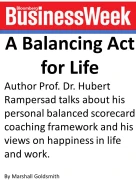




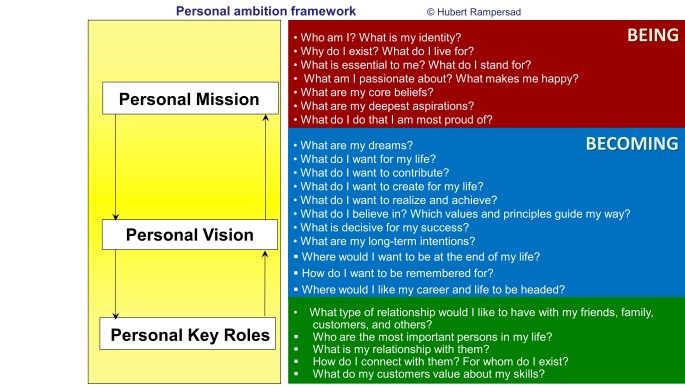

 Remember Nikola Tesla’s statement: “Being alone is when ideas are born. This is the secret of innovation”. Albert Einstein said almost the same: “Albert Einstein said almost the same: “Be a loner. That gives you time to wonder, to search for the truth. Have holy curiosity. Make your life worth living”.
Remember Nikola Tesla’s statement: “Being alone is when ideas are born. This is the secret of innovation”. Albert Einstein said almost the same: “Albert Einstein said almost the same: “Be a loner. That gives you time to wonder, to search for the truth. Have holy curiosity. Make your life worth living”. It is to strive for greater collective enlightenment.” By focusing inwardly and reflecting on your actions through self-examination with breathing and silence exercises, you can gain insights about yourself and your life’s purpose. This is what Einstein wanted to know.
It is to strive for greater collective enlightenment.” By focusing inwardly and reflecting on your actions through self-examination with breathing and silence exercises, you can gain insights about yourself and your life’s purpose. This is what Einstein wanted to know.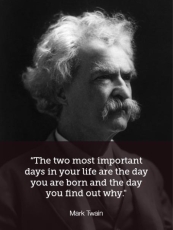 become more conscious of yourself, gain more creativity, and become a critical thinker. The thinking process and mindset changes are meant to prepare you for action as a proactive, empathic, and ethical critical thinker. Based on insights acquired through this process, you will also become more self-assured and work smarter through self-learning and self-knowledge. You become more creative and innovative as you grow more conscious of yourself. The words of Galileo Galilei may also be
become more conscious of yourself, gain more creativity, and become a critical thinker. The thinking process and mindset changes are meant to prepare you for action as a proactive, empathic, and ethical critical thinker. Based on insights acquired through this process, you will also become more self-assured and work smarter through self-learning and self-knowledge. You become more creative and innovative as you grow more conscious of yourself. The words of Galileo Galilei may also be


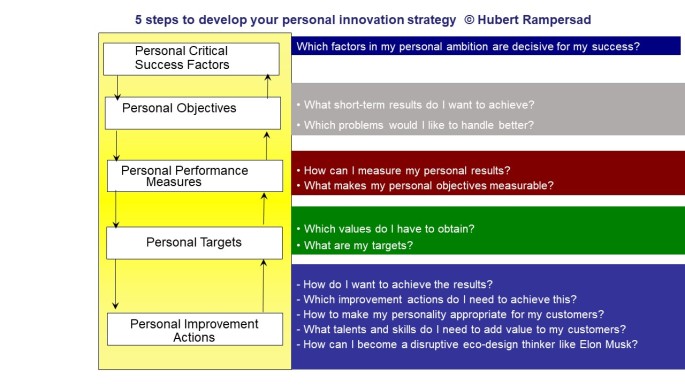



 AI users must balance their personal ambition with their current behavior and actions to develop personal integrity and empathy. Finding a balance between personal ambition and actions is crucial to achieving sustained personal integrity and empathy. During this alignment process, it is essential to reflect honestly on the following questions: What are my personal values, and how do they align with my actions? How can I ensure that my actions are consistent with my values? What are the potential consequences of my actions toward others? How can I empathize with others and understand their perspectives? Am I staying true to my values and conscience in my actions? Are my thoughts and actions aligned consistently? How do my values and intentions relate to my current behavior? Is there congruity between my thoughts and my actions? Am I always acting according to my personal ambition and empathetic nature? Does my personal ambition reflect my desire to work with ethics and empathy? Are there any discrepancies between my personal ambition and my empathetic actions? Do I keep the promises I make to myself? How do others perceive me and my values? Do they see me as someone who stays true to my core beliefs and remains authentic to myself?
AI users must balance their personal ambition with their current behavior and actions to develop personal integrity and empathy. Finding a balance between personal ambition and actions is crucial to achieving sustained personal integrity and empathy. During this alignment process, it is essential to reflect honestly on the following questions: What are my personal values, and how do they align with my actions? How can I ensure that my actions are consistent with my values? What are the potential consequences of my actions toward others? How can I empathize with others and understand their perspectives? Am I staying true to my values and conscience in my actions? Are my thoughts and actions aligned consistently? How do my values and intentions relate to my current behavior? Is there congruity between my thoughts and my actions? Am I always acting according to my personal ambition and empathetic nature? Does my personal ambition reflect my desire to work with ethics and empathy? Are there any discrepancies between my personal ambition and my empathetic actions? Do I keep the promises I make to myself? How do others perceive me and my values? Do they see me as someone who stays true to my core beliefs and remains authentic to myself?



